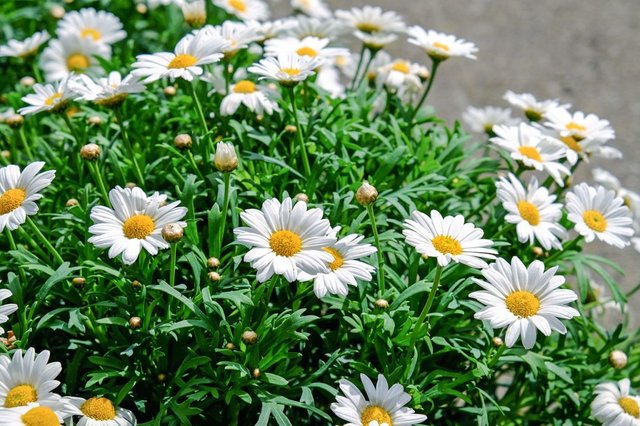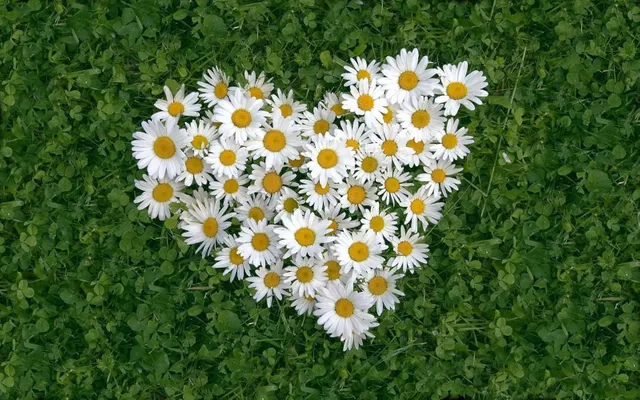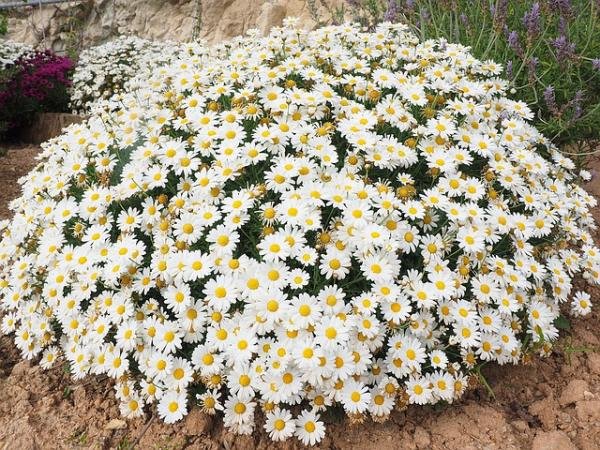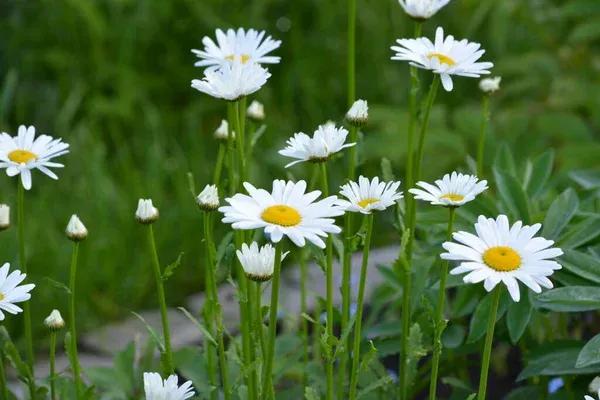The Daisy: Natural Beauty, Symbolism and Benefits
The daisy, with its simplicity and elegance, is one of the most beloved and well-known flowers in the world. Its scientific name varies depending on the species, but the most common belong to the genera Leucanthemum and Bellis. Daisies are characterized by white petals and a bright yellow center, giving them a fresh and cheerful appearance. These flowers bloom mainly in spring and summer, and their presence is common in gardens, parks and in nature.

Daisy Symbolism
Daisies have deep and diverse symbolism. In many cultures, they are associated with purity, innocence, and renewal. In the language of flowers, the daisy represents true love, loyalty and simplicity. It is said that when you tear off one of its petals while saying "he loves me, he doesn't love me", it symbolizes doubt in love relationships. However, the daisy flower is also linked with hope and optimism due to its hardy nature and ability to bloom for most of the year.
Types of Daisies
There are several species of daisies, but the two most common are:
- Leucanthemum vulgare: This is the classic garden daisy, with large white petals and a yellow center. Bellis perennis: Also known as common daisy or field daisy, it is smaller in size and usually grows wild in meadows and gardens.
- Both species are popular in gardening and landscaping due to their ease of cultivation and resistance to various climatic conditions.

Care and Cultivation
Daisies are hardy plants that can grow in a variety of soils, although they prefer well-drained soils. They are ideal for gardens, as they adapt to both sunny and slightly shady environments. For optimal growth, it is advisable to plant them in a place where they receive at least 4 hours of direct sun per day.
As for watering, daisies require moderate watering. It is important to avoid overwatering as this can cause root rot. During the flowering season, it is advisable to remove spent flowers (a process known as "deadheading pruning") to encourage the growth of new flowers.
Fertilization is not strictly necessary, but a balanced fertilizer in early spring can help the plant grow stronger and bloom longer. In cold climate areas, it is important to protect daisies during the winter by covering them with a light layer of mulch.

Medicinal Benefits and Uses
Beyond their decorative beauty, some species of daisies have medicinal properties. In traditional medicine, daisies have been used to relieve various disorders, such as:
- Anti-inflammatory properties: Some daisy infusions have been used to reduce inflammation and relieve muscle or joint pain.
- Digestive benefits: The infusion of daisies can help improve digestion and soothe stomach upsets.
- Relaxing properties: Daisy is believed to have a calming effect on the nervous system, which can help reduce stress and anxiety.

Uses in Decoration and Landscaping
Daisies are perfect for decorating gardens, pots and outdoor spaces. In addition to being very attractive, they combine well with other flowers and plants, making them an excellent option for creating colorful floral compositions. They can also be used as cut flowers for centerpieces, bringing freshness and luminosity to the home.
In landscaping, daisies work great in informal gardens, borders, or even as a ground cover due to their expansive growth. They are also attractive to pollinators such as bees and butterflies, contributing to local biodiversity.
